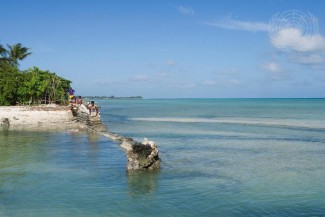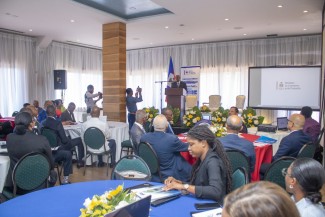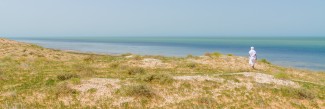Least Developed Countries (LDCs) face obstacles to improving their trade capacity, but there are opportunities on the horizon
Enhanced Integrated Framework (EIF) head Ratnakar Adhikari discusses the trade outlook for Least Developed Countries (LDCs), what the EIF is doing to support local industry and what trends he's seeing for greater and deeper impact.
How do you see the trade for development landscape in 2018?
The WTO's multilateral negotiations are facing challenges, especially following the 11th Ministerial Conference in Buenos Aires in December and despite good progress made in the run-up to the conference on some issues. It may not possible for each ministerial to deliver concrete outcomes, but what is important is that WTO members continue to talk to each other with a view to achieving positive results. This is precisely what is happening now.
Members are discussing topics like e-commerce; micro, small and medium-sized enterprises; gender; and investment facilitation, among others. We don’t know how these group discussions will evolve in terms of direction and outcomes, but these are open-ended talks with the possibility of others joining.
Aside from thematic discussions, has there been progress on the regional front or anything else of import for LDCs?
Because of relatively slow progress on the multilateral front, some WTO members may start negotiating at the regional level, as they consider that it is relatively easier to achieve results in such fora. However, from my conversations with LDCs I get a sense that they are equally aware of the fact that their interests are best protected within the multilateral trading system.
In terms of the global economic landscape, the ongoing recovery is still fragile, and most of the recovery has not created a lot of space for LDCs to integrate themselves. There are still geopolitical risks and risks related to the financial situation at the global level, and risks related to the fragility of economic growth itself.
And the LDCs share of global trade is not increasing. In 2014 it was almost one percent and it's been going down. The reason is that LDCs are dependent on the export of commodities – mostly oil and minerals – and commodity prices have dwindled considerably in the past three years.
In 2010 the global community through the Istanbul Programme of Action for the LDCs made a commitment to increase developing countries' share of world trade by 2020, and the Sustainable Development Goals in 2015 have only reinforced that commitment. But now there is the challenge of doing so. Our agenda at EIF is to support the poorest countries improve their trade and to help diversify their exports and work toward higher value-added products.
What kind of work is the EIF doing in support of this?
EIF is working on numerous small-scale projects that address the obstacles LDCs are facing. We are supporting LDCs to add value and move up the value chain ladder by helping them to engage in sectors such as agro-processing, textiles and clothing and chemicals that are more stable and less vulnerable, less susceptible to the fluctuations of global prices. We are also trying to help them harness the potential of e-commerce and diversify their exports.
You just mentioned the possibilities e-commerce holds for LDCs. Can you elaborate?
EIF has completed e-commerce assessments in Nepal and Samoa. We are also partnering with the broader 'eTrade for All' initiative hosted by UNCTAD. We have also initiated such assessments in Liberia, Vanuatu and the Solomon Islands that will identify priorities and look at possible areas for intervention.
In the case of Bhutan we didn't do the assessment – but this is where the role of partnership comes into play. UNCTAD did the assessment and we looked at the areas where we could contribute. It coincided with a proposal we received from Bhutan on e-commerce so we encouraged them to include in the project some of the recommendations from the UNCTAD study. The EIF and the government contributed resources in support of the project, which has already begun. One of the early results delivered was that they have started auctioning potatoes online. And they are moving toward similar auctions with other products as well as going beyond to diversify their markets to other countries. Currently more than 90 percent of their exports are concentrated with their southern neighbour, India.
I am an advocate of e-commerce as it can help small enterprises bypass intermediaries and connect to the buyer directly. At the end of the day what is important is how much is transferred to farmers' or small businesses' pockets.
What about EIF's work in countries? What kinds of successes have you seen from these efforts?
On the institutional front, two good examples from Southeast Asia immediately come to mind.
Laos, with a small amount of support from EIF, has created a trust fund and there is now strong country ownership.
There has been a similar modality with Cambodia – they have created a trade Sector Wide Approach (SWAp) within which the trust fund is created. The government then applies their own procurement practices, their own auditing and their own financial rules and regulations. This has created strong country ownership and built the capacity of Department of International Cooperation to take their trade and development agenda forward.
On the productive capacity front, Mali has enhanced its mango productivity. EIF connected the Mali government to the Government of the Netherlands and the country now has a mango processing plant and woman-led cooperatives that produce mango jam and dried mangoes that are exported to Europe.
In Zambia the EIF has been focusing on honey. The country relies on copper exports but copper prices have been fluctuating and we wanted to help them with diversification. The kind of technology they had been using was inefficient, and they are now using new technology at a beekeepers' cooperative and now they have their own center, a packaging facility and are exporting honey as well as its wax (by-product) at a global standard.
What are EIF's plans for 2018 and beyond?
Well we continue to have an advocacy objective, to reach out to wider constituencies whether it be LDCs and their people or donors and the taxpayers in those countries and other partner agencies. We are always looking to create new collaborations to work for improved trade for LDCs.
We have an expansive agenda of partnership and we don’t want to confine ourselves but to engage in new and different ways. That includes launching the Trade for Development News site to serve as a hub for information on LDCs, aid for trade and trade for development around the world in partnership with several organizations within the organic EIF structure as well as outside. This is one example of how we can leverage partnership for expanding our outreach with a view to achieving our shared goals.
"We are always looking to create new collaborations to work for improved trade for LDCs."
Ratnakar Adhikari, Executive Director of the EIF
We want to further strengthen this part of our work. And that is one of the aims of the Global Platform we are organizing from 13-14 June 2018; it will be a space where, for instance, Cambodia can share its experience with Liberia, Vanuatu with Comoros, and Zambia with Yemen. Because it is by letting people know what LDCs are doing, what has worked, and what lessons we've learned along the way that we can continue to support LDCs increase their trade capacity.
If you would like to reuse any material published here, please let us know by sending an email to EIF Communications: eifcommunications@wto.org.



